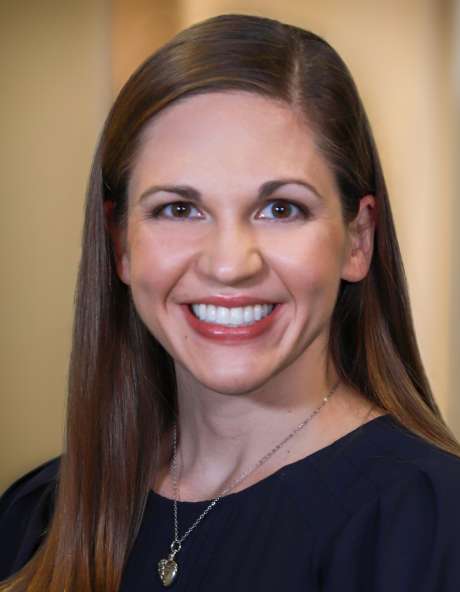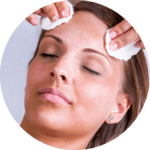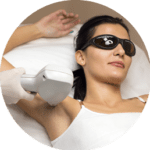Mohs Micrographic Surgery Preoperative Information
Your surgery will be performed in our clinic at 12910 Pierce Street, Suite 120, Omaha, NE 68144.
Mohs micrographic surgery is a targeted therapy used to treat skin cancer. It aims to remove cancerous cells while providing the highest possible cure rate.
The procedure is performed in the office on an outpatient basis. Dr. Frederick Mohs developed this technique in the 1930s. Today, it is widely used for common skin cancers like basal cell carcinomas and squamous cell carcinomas.
Applications of Mohs Surgery
While Mohs surgery is commonly used to treat skin cancer in certain basal and squamous cell skin cancers it is also used to treat Merkel cell carcinoma. Side effects of Mohs surgery include pain or tenderness, and occasional bleeding. Advanced Dermatology of the Midlands Mohs surgeons and Omaha dermatologists, Mathew Davey, M.D. FAAD and James Shehan, M.D. FAAD, are both members of The American Society for Mohs Surgery.
Highly Effective Treatment Outcomes
According to the Skin Cancer Foundation, Mohs micrographic surgery achieves cure rates of up to 99% for primary skin cancers and 95% for recurrent cases. Clinical studies consistently demonstrate that this specialized technique provides the highest cure rates of any skin cancer treatment method.
The American College of Mohs Surgery reports that fellowship-trained surgeons achieve a 99% cure rate for previously untreated basal cell carcinoma and 95% for recurrent cases. These exceptional outcomes result from the unique ability to examine 100% of the surgical margin under microscopic evaluation, ensuring complete cancer removal while preserving the maximum amount of healthy tissue.
Research published in medical journals confirms that Mohs surgery significantly outperforms traditional surgical excision, particularly for recurrent skin cancers where cure rates can be as much as 10% higher than conventional methods. This precision approach makes it the most effective treatment available while minimizing the risk of scarring in cosmetically sensitive areas.
When Is Mohs Surgery Recommended?
Mohs surgery isn’t needed for every type of skin cancer, but it’s the preferred option in certain cases. This procedure is often recommended for cancers in delicate or highly visible areas like your face, ears, or hands where preserving healthy tissue is vital for function and appearance.
It’s also ideal for skin cancers that have come back after previous treatments or those with hard-to-see borders that make complete removal challenging. Our dermatologists are experienced in treating these complex and high-risk cases, helping you achieve the best possible outcome with minimal impact on surrounding skin.
Types of Skin Cancer and Treatment with Mohs Surgery
Skin cancer can manifest in various forms, including basal cell carcinoma, squamous cell carcinoma, and melanoma. Each type can affect different layers of skin, with some remaining on the surface while others penetrate deeper. Mohs micrographic surgery is particularly effective for superficial skin cancers, as it allows for precise removal of cancerous tissue.
This technique ensures that the cancer is completely removed, even at microscopic levels, leading to the highest cure rates. By carefully excising affected layers of skin, this method helps preserve as much healthy tissue as possible while achieving thorough treatment.
What skin cancers can Mohs surgery treat?
Basal Cell Carcinoma: The most common form of skin cancer, often appearing as a pearly bump or flat, scaly patch.
Squamous Cell Carcinoma: The second most common form of skin cancer, typically presenting as a firm red nodule or rough, scaly lesion.
Other skin cancers: Including melanoma in specific situations where precise tissue preservation is critical.
Mohs surgery is especially recommended for:
Recurrent skin cancers: Tumors that have returned after previous treatments require the precision that Mohs provides.
Skin cancers in sensitive areas: Face, eyelids, nose, lips, ears, hands, or feet where preserving healthy tissue is essential.
Large or aggressive tumors: Cases requiring maximum cancer removal with precise margins to ensure complete elimination.
Addressing High-Risk Skin Cancers
Mohs micrographic surgery is especially effective for treating skin cancers that are considered high-risk. These may include cancers that have recurred after previous treatment, tumors with unclear borders, or those located in sensitive or cosmetically important areas such as the nose, eyelids, ears, lips, and hands.
The procedure allows our dermatologists to examine the tissue microscopically during surgery. This step-by-step approach ensures that all cancerous cells are removed while sparing as much healthy tissue as possible. Because of its precision, Mohs surgery offers the highest cure rates and is ideal for skin cancers where complete removal and tissue preservation are both important.
Mohs Surgery to Remove Skin Cancer
During the surgery, our board-certified dermatologists use local anesthesia to numb the area (skin) completely, similar to the initial biopsy. The surgeon removes the visible cancer with a thin rim of normal/healthy tissue. The skin sample is then sent to our CLIA-certified Mohs laboratory. There, it is frozen (cryo-stat), cut into microscopic-thin sections, stained, and examined under the microscope by the dermatologist to check if all of the cancer has been removed.
If any skin cancer remains, the dermatologist will identify its exact location and repeat the process until the entire area is deemed cancer-free. Following that, your dermatologist will discuss the best treatment options to close the area of the skin. In most cases, the closure will be performed on the same day.
Reserve the entire day for this surgery, because the final size and extent of the skin to be removed to clear you of the cancer cannot be predicted in advance. After your Mohs surgery is completed, we will review care for the area with you and schedule your post-operative visit. You will leave the office with a bandage in place over the surgery area.
Recovery & Aftercare: What to Expect After Mohs Surgery
Recovering from Mohs surgery is often easier than anticipated. Here’s what most patients experience and how to care for your surgical site:
- Mild Tenderness and Swelling
Expect some tenderness or swelling around the treated area, which usually subsides within a few days. - Bruising
Minor bruising can occur but typically fades within one week. - Healing Timeline
Most wounds begin closing within 2 to 3 weeks, while deeper tissue repair continues beneath the surface for several months. - Daily Care
Keep the area clean and dry, changing dressings daily. Apply prescribed ointment as directed and avoid strenuous activity for one week. - Follow-Up Appointment
Return in one week for suture removal and healing assessment. - Long-Term Scar Management
Use sun protection and consider silicone gel sheets to minimize scarring.
Our team will provide detailed aftercare instructions and remain available to monitor your progress. We also encourage regular skin checks to detect any future changes early and maintain optimal skin health.
If any of the following apply to you, please notify our office on the day of surgery (if you did not already discuss them with the nursing staff when you scheduled the procedure):
- If you take Coumadin (warfarin), please call our office with the most recent PT/INR levels immediately.
- Have an artificial joint, artificial heart valve, any other implanted electrical devices in your body or have been told by another doctor to take antibiotics prior to dental or surgical procedures, please contact our office immediately.
Plan on being in the office for at least 3 to 4 hours for the procedure, processing, and testing.
We encourage you to bring a book or some magazines to read as well as a snack/drink. Also, we encourage you to bring a family member or friend with you on the day of the procedure for your supportive care. Wash your hair and face the night before and morning of the surgery. Do not wear any make-up, hair products (spray, gel, etc.), or hair pieces to the surgery. A hat may be worn but will need to be removed during the procedure. Wear an old, clean shirt, but do not wear any jewelry. Consider bringing an old, clean blanket or jacket to the office. Unless otherwise directed, take all of your normal medications and feel free to eat breakfast the morning of your procedure.
If you need to change or reschedule your procedure date, please call the dermatologist’s nursing staff as soon as possible.
Mohs Surgery Omaha, NE – Advanced Dermatology of the Midlands
If you have any questions, please feel free to contact one of our dermatology clinic locations near you. We look forward to seeing you soon.
Free Skin Cancer Screening in Omaha, NE at Advanced Dermatology of the Midlands
Advanced Dermatology of the Midlands offers free skin cancer screenings to help detect early signs of skin cancer, which can be crucial for effective treatment. Our skilled dermatologists are dedicated to providing thorough and compassionate screenings for residents in Omaha and surrounding areas. During a screening, our team examines your skin for any unusual moles, spots, or lesions and offers guidance on protecting your skin from harmful UV rays. Early detection of skin abnormalities can make all the difference, and our experts are here to provide the peace of mind you deserve.
Contact us today to ask about our next free skin cancer screening event in Omaha, NE.













